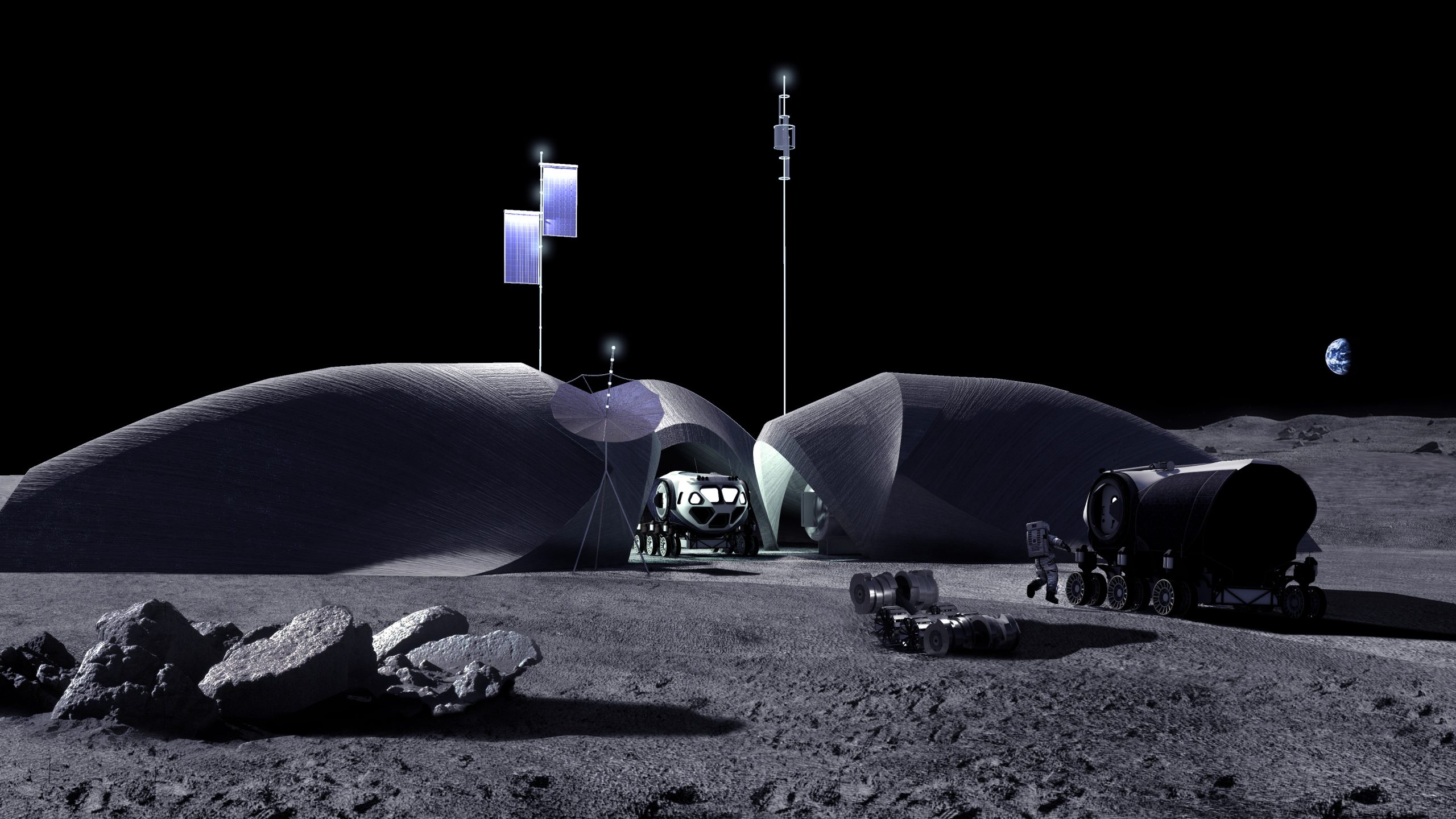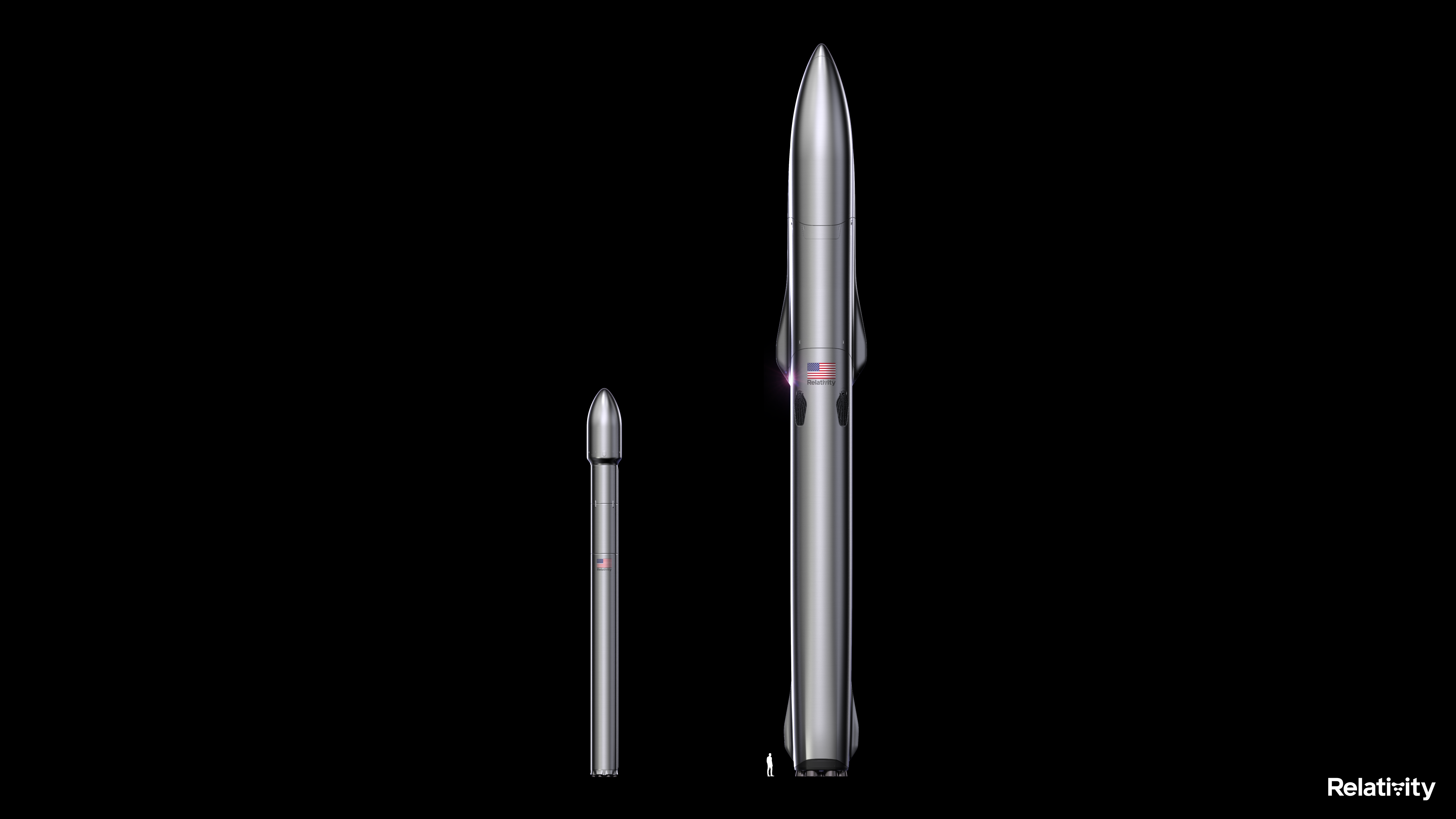The aerospace sector has seen several 3D printing-related milestones announced over the past month, ranging from a new bouncing space robot for asteroid exploration to the launch of a pioneering new NASA satellite into lunar orbit.
Two new developments have now come to light from NASA Kennedy Space Center, space technology design agency AI SpaceFactory, and 3D printed rocket manufacturer Relativity Space. The former two have unveiled their designs for NASA’s 3D printed lunar outpost LINA, while Relativity Space has signed a multi-launch agreement with space-based communications firm OneWeb to launch its low Earth orbit (LEO) satellites in 2025.

The LINA lunar outpost
The design and testing of LINA are part of NASA’s REACT project to advance the technologies and materials AI SpaceFactory created for the agency’s 3D Printed Habitat Challenge.
NASA is currently working on several projects to create lunar structures, including a couple with Texas construction firm ICON to 3D print a martian habitat that accurately recreates the conditions future astronauts will experience when they visit the surface of Mars, and to additively manufacture a lunar launch pad made from lunar regolith.
AI SpaceFactory’s original polymer, made with a martian regolith simulant, was modified to use actual lunar regolith and will be tested in a NASA vacuum chamber designed to simulate the environmental conditions on the moon.
The results of the testing phase will provide further information regarding the development of a sustainable 3D printing system capable of constructing large structures on the moon’s surface, which will be eventually used to print LINA.
NASA and AI SpaceFactory have now revealed the designs for LINA, which will be constructed by autonomous robots on the south pole of the moon near the Shackleton crater. Near continuous sunlight on the crater’s peaks is predicted to provide solar power, while the shadow on the crater’s interior should enable the harvesting of water ice.
LINA is designed with 3D printed ‘Romanesque’ arches capable of withstanding high compressive loads with minimal material, which will be topped with 2.7 meters of lunar regolith to provide protection from radiation, micrometeorites, lunar seismic activity, and extreme thermal swings.
According to AI Space Factory, the strength of its regolith polymer composite will support the lunar outpost’s geometry to create a sustainable and long-lasting structure that could support long-term habitation and potentially future travel to other planets. The first test prints in the vacuum chamber are expected to take place later this year.
“Our Mars habitat prototype MARSHA proved that 3D printing with a polymer composite was a strong collusion for habitation off-world,” said David Malott, CEO of AI SpaceFactory. “Developing LINA and printing in an environment that is void of atmospheric pressures or weather systems advances that technology through a new context, with new and more precise variables.”
Relativity Space secures $1.2 billion launch contracts
Meanwhile, Relativity Space has brought the total backlog of launch contracts for its Terran R to $1.2 billion, after securing a multi-launch agreement with OneWeb. The Terran R is the firm’s first reusable, fully 3D printed launch vehicle slated for launch in 2025, proceeded by the original Terran 1 which is set for its first orbital launch imminently.
Relativity Space raised $650 million to accelerate the production of the Terran R in June last year which will be capable of launching over 20,000kg to LEO. The Terran R is a two-stage, 216-foot tall rocket with a 16-foot diameter and five-meter payload fairing that will be capable of delivering 20 times more payload to orbit than the Terran 1.
The multi-year launch services agreement with OneWeb will see the Terran R launch the communications firm’s LEO Gen 2 satellites from 2025, adding capacity and fresh capabilities to its existing 648 satellites in orbit. The Terran R will launch OneWeb missions from Relativity Space’s site at Cape Canaveral Space Force Station.
“We are excited about this agreement with Relativity, who we’ve long admired as a true disruptor in the aerospace manufacturing industry,” said Massimiliano Ladovaz, CTO of OneWeb. “Relativity will add new capacity to our launch program well into the future.”
Despite the Terran R remaining several years away from launch, OneWeb is the fifth customer Relativity Space has secured for the rocket’s services. The multiple launch agreements have led to a total backlog of more than $1.2 billion for the firm.
“We are honored to be chosen by OneWeb to help launch their Gen 2 constellation,” said Tim Ellis, Co-founder and CEO of Relativity Space. “They have an incredible team, technology, and momentum as a world leader in satellite connectivity with hundreds of operational satellites already in orbit. It is clear that more disruptive launch capacity of needed in the marketplace – Relativity is developing Terran R to fill this additional demand.
“We cannot wait to plan, execute, and successfully launch these missions together with OneWeb.”

Subscribe to the 3D Printing Industry newsletter for the latest news in additive manufacturing. You can also stay connected by following us on Twitter and liking us on Facebook.
Looking for a career in additive manufacturing? Visit 3D Printing Jobs for a selection of roles in the industry.
Subscribe to our YouTube channel for the latest 3D printing video shorts, reviews, and webinar replays.
Featured image shows a render of the 3D printed LINA lunar outpost. Image via AI SpaceFactory.



